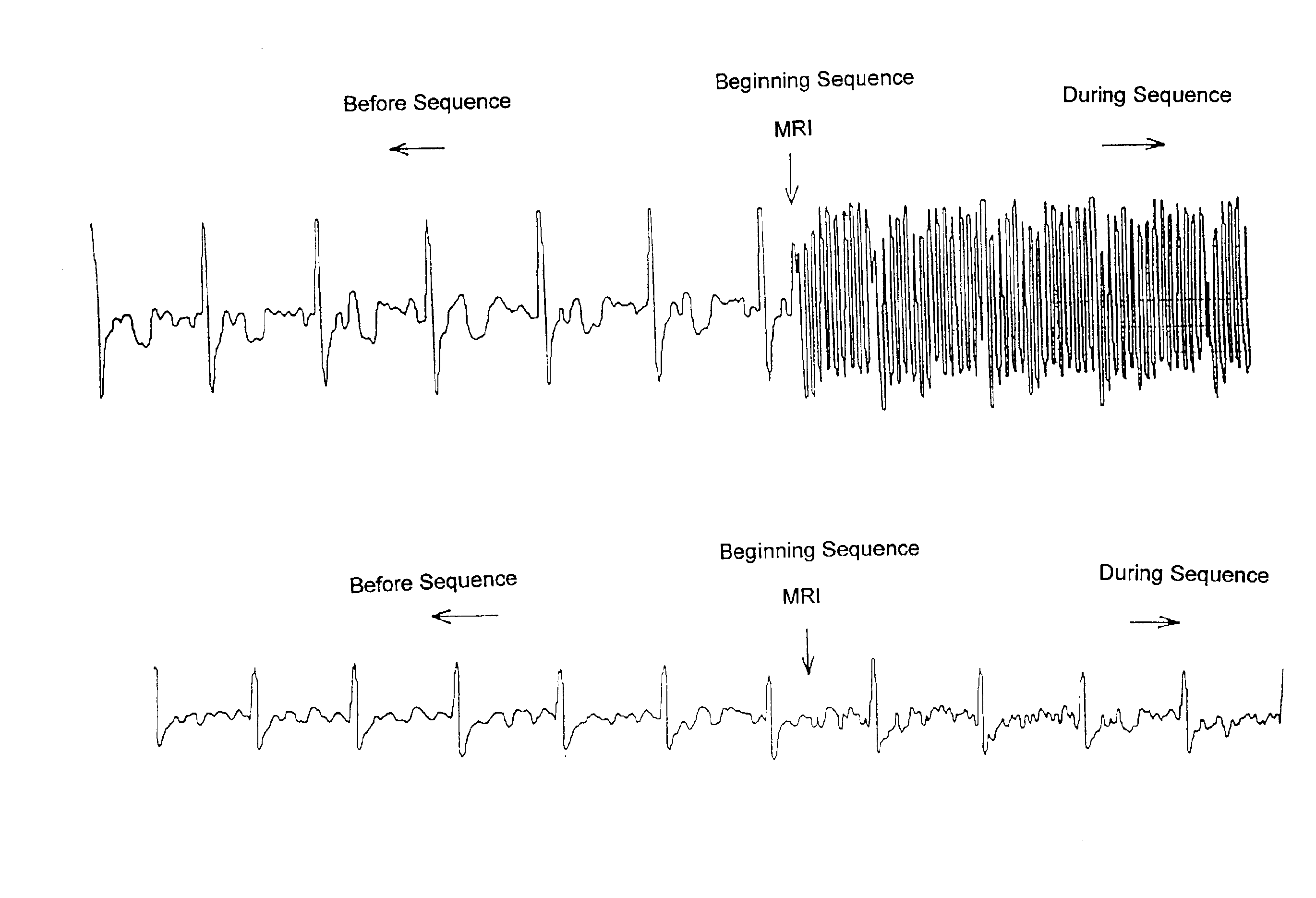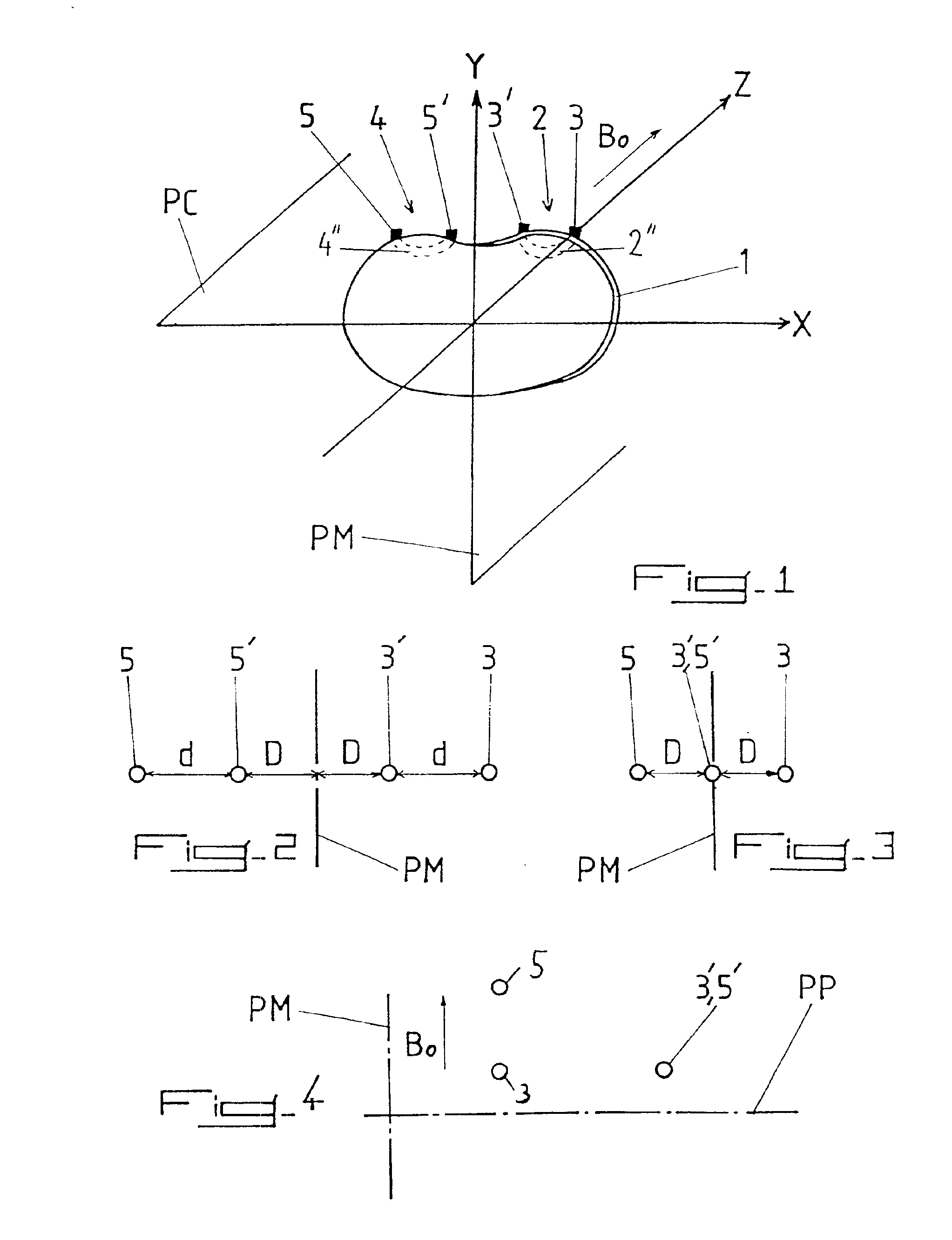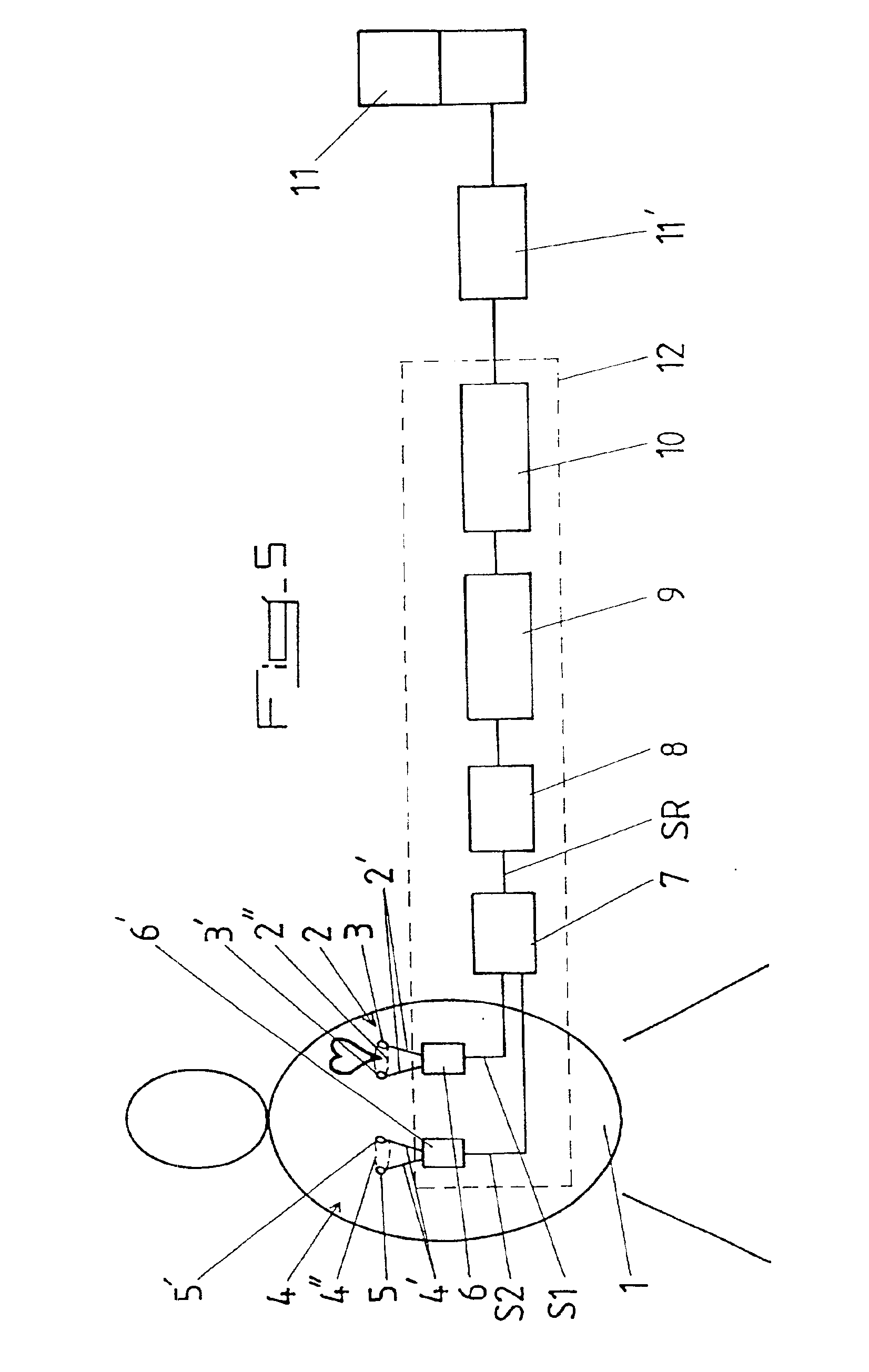Method and apparatus for obtaining an electrocardiograph
a technology of electrocardiograph and electrocardiograph plate, which is applied in the field of electrocardiograph method and apparatus, can solve the problems of noisy ecg, difficulty increase, and inability to obtain clear signals
- Summary
- Abstract
- Description
- Claims
- Application Information
AI Technical Summary
Benefits of technology
Problems solved by technology
Method used
Image
Examples
first embodiment
In accordance with the invention, the first and second measurement loops 2 and 4 are disposed essentially symmetrically in relation to the median plane PM of patient 1 perpendicular to the patient's coronal plane PC, while electrodes 3, 3′; 5, 5′ of the two measurement loops 2 and 4 are preferably, but not necessarily, arranged in alignment with similar spacing between the electrodes in each pair 3 and 3′; 5 and 5′ (see FIGS. 1 through 3 and 5 of the attached drawings).
The inventor is able to state with certainty that the sound signals recovered by measurement loops 2 and 4 configured and arranged as described above are essentially identical in current MRI experiments making use of magnetic field gradients.
second embodiment
According to the invention shown in FIG. 4 of the attached drawings, the three electrodes 3, 3′; 5, 5′ forming the two measurement loops 2 and 4 are arranged in a triangular configuration near the cardiac region in such a way that the second measurement loop 4 recovers a signal component representing an ECG with opposite polarity and amplitude essentially equal to the signal component representing the ECG recovered by the first measurement loop 2.
Finally, so that it can be used in real time, especially to monitor the condition of a patient undergoing an MRI examination, the signal SR resulting from the addition or subtraction of the differential signals S1 and S2 delivered by the two measurement loops 2 and 4 can be processed by a pass-through filter 8, then used to modulate the frequency of a carrier and finally, transmitted to an apparatus 11 equipped with a means for displaying the filtered ECG signal SR, possibly after conversion into an optical signal.
It is also possible for th...
PUM
 Login to View More
Login to View More Abstract
Description
Claims
Application Information
 Login to View More
Login to View More - R&D
- Intellectual Property
- Life Sciences
- Materials
- Tech Scout
- Unparalleled Data Quality
- Higher Quality Content
- 60% Fewer Hallucinations
Browse by: Latest US Patents, China's latest patents, Technical Efficacy Thesaurus, Application Domain, Technology Topic, Popular Technical Reports.
© 2025 PatSnap. All rights reserved.Legal|Privacy policy|Modern Slavery Act Transparency Statement|Sitemap|About US| Contact US: help@patsnap.com



